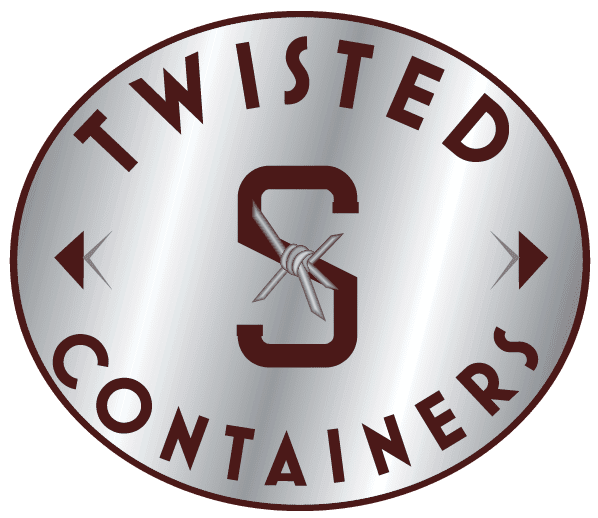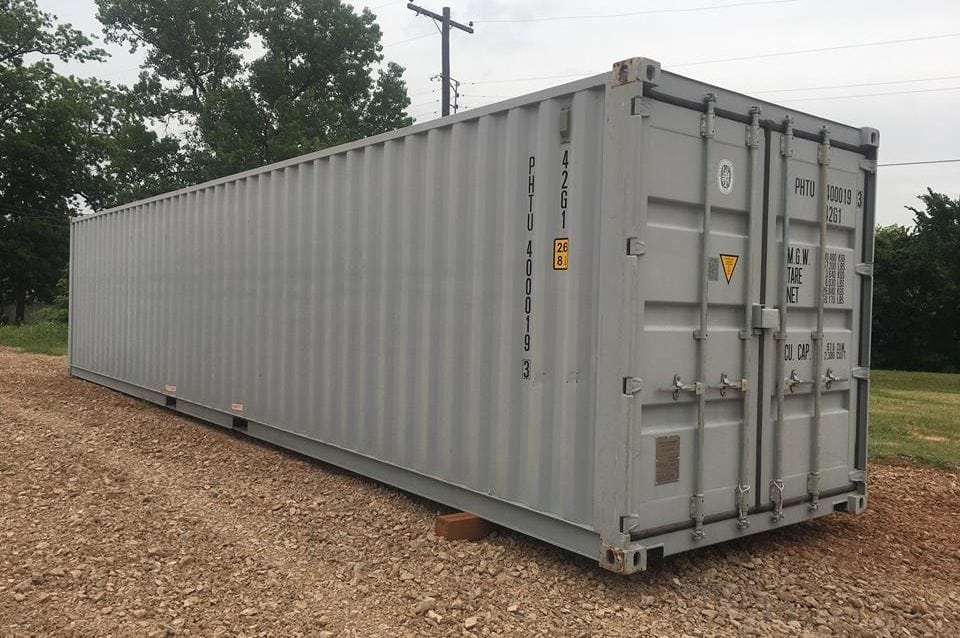Every shipping container should have stable walls and working doors. From there, used shipping container conditions vary. Describing various container circumstances requires understanding a few key terms. These container abbreviations, acronyms, and terms aren’t too intuitive to first-timers.
We are here to help.
In this shipping container conditions guide, we will explain key industry terms, basic container types, and answer a few shipping container FAQs about the different types of water tight shipping containers available to the general public.
Shipping Container Conditions Guide: Abbreviations to Know
- 1-Trip — A one trip container is a water tight container that has only been used on one overseas cargo load.
- CSC — The Convention for Safe Containers (CSC) established safety regulations, which included adding a CSC plate on each container, listing its manufacture date and safety information including stacking capacity and maximum weight.
- CWO — A cargo worthy container that is certified for shipping.
- IICL — The Institute of International Container Lessors (IICLL) is a trade organization for companies in the container and chassis leasing industry. It sets high standards for shipping container inspections and repairs.
- ISO — International Standardization Organization (ISO) is a Geneva-based international organization that works towards standardized measurements for technology and engineering. Standardized freight containers are important because they are manufactured to connect together like interlocking blocks. For this reason, sometimes shipping containers are sometimes referred to as ISO containers.
- WWT — Wind and water tight. Containers for sale to the general public are often called WWT containers.
Shipping Container Conditions Explained
Though every container condition is different, cargo worthy containers are the only ones that you can be sure meet international shipping standards. Some of these include:
1-Trip Shipping Containers
A one-trip shipping container is a container that was built and loaded with cargo overseas and made one shipping line trip across the ocean. One-trip condition shipping containers aren’t considered brand new containers. They are generally 1-2 years old and were actually used for cargo transportation and temporary storage. There will be some signs of wear from loading and unloading. However, walls, floors, doors, locking mechanisms, and door seals will be in like-new condition. With fresh paint and minimal dents, rust, and scuff marks, one-trip containers have the best-looking exterior.
CWO Shipping Containers
CWO shipping containers, also known as cargo worthy shipping containers, are still in good condition to be used for overseas shipping, but they have been around the block. They are generally 7 to 15 years old and will show some wear and tear, but will still be wind and water tight.
To be declared cargo worthy, a container has to be inspected and certified. If certified as such, this means that it can be filled with about 40,000 pounds of goods and stacked on a ship. Structural integrity is important, especially for container delivery. CWO containers need to be capable of being stacked up to 21 containers high on some cargo ships.
WWT Shipping Containers
Wind and Water Tight (WWT) containers are among the most common types of used containers available to the general public. Generally 10+ years old, they remain fully sealed against moisture and pests, making them ideal for storage and non-shipping applications.
Key Features of WWT Containers
- Structural Integrity: Free from holes and cracks, with walls that still maintain overall stability.
- Door Seals: Must have intact door seals and functioning locking mechanisms to keep water, wind, and dust out.
- Wear & Tear: Expect signs of aging such as surface rust, welded patches, dents, and dings. These cosmetic imperfections do not usually compromise the container’s protective qualities.
Why Choose a WWT Container?
- Cost-Effective: They’re typically cheaper than One-Trip or Cargo Worthy (CWO) containers, making them a budget-friendly solution for secure on-site storage.
- Easy to Find: Since WWT is the standard condition for retired shipping containers, there’s generally plenty of inventory to choose from.
- Flexible Use: Perfect for storage sheds, workshops, short-term offices, or pop-up spaces where wind and water resistance is sufficient.
Can a WWT Container be Upgraded for Shipping?
- Repair & Inspection: While WWT containers are not certified for intermodal shipping, they can often be repaired and recertified as Cargo Worthy (CWO). This process involves addressing any structural issues and passing a new inspection to obtain a valid CSC plate.
- Investment vs. Need: If you do plan on shipping goods internationally, you’ll need to factor in the costs of repairs, inspections, and recertifications. In many cases, purchasing a CWO container from the start might be more economical if immediate shipping is your goal.
Overall, WWT containers provide a balance between affordability and durability, making them a top choice for those who need reliable, water-resistant storage without paying a premium for a newer or certified unit.
As-Is Shipping Containers
An as-is container is no longer considered wind and watertight. As-is condition containers will be 15+ years old and have heavy signs of wear. The condition of as-is containers varies. As-is shipping containers are in much poorer condition than CWO or WWT containers. Small holes, warped floorboards, and damaged door seals are common.
Ultimately, if you are looking for a new container, you should purchase a one-trip or cargo worthy container. Depending on your storage needs, such as needing a refrigerated container or a high cube container, there are various used and refurbished container options available.
More importantly, a new shipping container will set you back a pretty penny. Thus, choosing a used container can save you money in the long run. It will provide you with the same sturdiness and safety for your belongings. They may require some repairs or reconditioning before they can be put to use, but if you have basic handyman skills, this shouldn’t be an issue. Just be sure to inspect the container thoroughly before buying shipping containers or getting a container rental.
FAQs: Shipping Container Conditions
With each of the container grades and container type explained, here are a few frequently asked questions about container conditions:
What’s the difference between a CWO and WWT shipping container?
To be cargo worthy, a CWO storage container is one that can pass a CSC inspection. CWO containers are also wind and watertight. But, WWT condition containers are not cargo worthy without repair and inspection. WWT containers are generally a few years older than those in cargo worthy condition. They will have more rust, dings, and dents, but nothing that couldn’t be repaired to CWO standards.
What’s the difference between a WWT and an as-is shipping container?
The biggest difference is that an as-is container may not have a working door seal. Beyond that, as is containers may need some repairs before they can be considered in storage-worthy condition.
Which types of shipping containers do and don’t have surface rust?
As-is, WWT, and CWO containers will have rust. Storage containers in 1-trip condition will have minimal rust. If you are looking for a cargo container in excellent condition, look for one-trip containers.
Which shipping containers can be used for exports?
A cargo worthy container with the proper certification can be used for exports. WWT containers can be repaired and recertified to CWO status.
Shipping Containers in Oklahoma
At Twisted S Containers, we inspect all containers as they come into our yard. If you need advice about the best shipping container conditions for your needs, Twisted S Containers can help. We offer like-new and used shipping containers for sale in Oklahoma.
Whether you need a 20 ft container or a 40 ft container for a container house or office, browse our available inventory online. Contact Twisted S Containers today. Get started on your next container project!
Read more shipping container tips and tricks in the Twisted S Containers blog.

